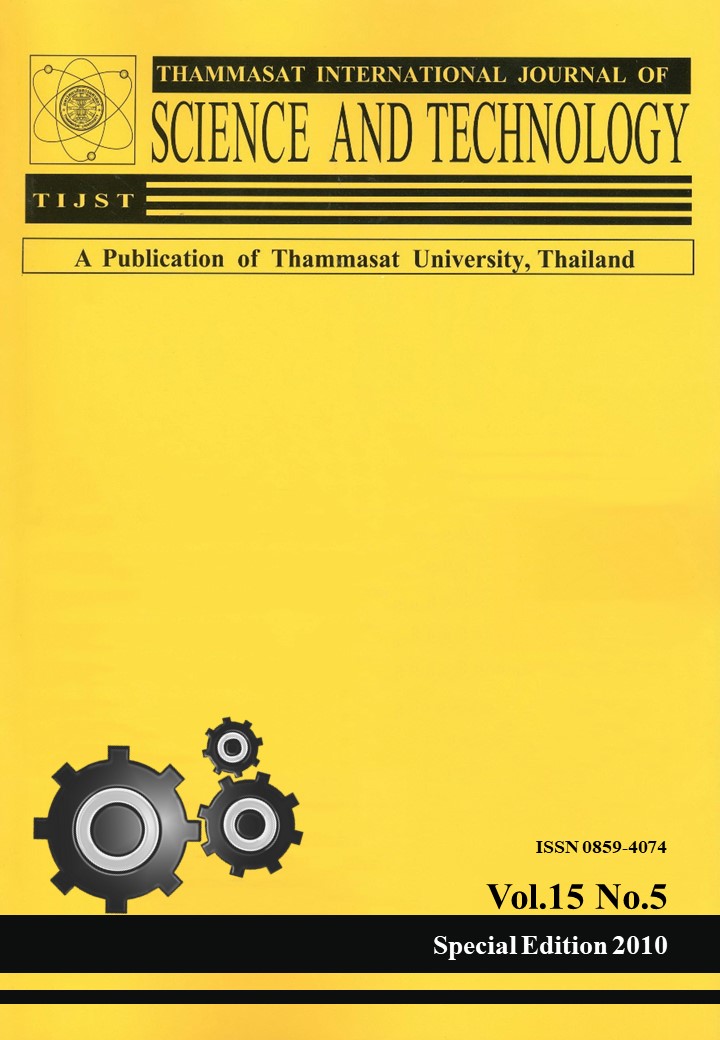Ionic Conductivity of Carbon Black-Filled Chitosan-Grafted-Poly (Vinyl Alcohol)/Poly (Vinyl Alcohol)Membranes
Keywords:
chitosan membrane, chitosan-grafted poly(vinyl alcohol), carbon black, direct methanol fuel cell, crosslinkAbstract
Chitosan-grafted poly(vinyl alcohol)/poly(vinyl alcohol) (CS-g-PVA/PVA) membrane has been synthesized and studied for use as a polyelectrolyte membrane for direct methanol fuel cells because of its high water absorbability and low methanol permeability. Besides, it has high mechanical strength in the wet state. In this work, the increase of ionic conductivity is our focus. The enhancement was by filling the membrane with self-dispersible carbon black (SDCB) nanoparticles having hydrophilic carboxylic group (COO-) on their surfaces. Moreover, crosslinking with sulfuric acid was also used to increase ion conductivity of the membrane. The conductivity of CS-g-PVA/PVA membrane obtained had a low ionic conductivity of 0.258 mS/cm, slightly greater than that of chitosan membrane, which was 0.223 mS/cm. Upon crosslinking with increasing concentration of sulfuric acid solution up to 6%, the ionic conductivity was found to increase. At its maximum, the conductivity was 7.713 mS/cm, 30 times the original. In addition, filling with SDCB without crosslinking increased the conductivity slightly. However, filling with SDCB together with crosslinking showed synergistic effects on the ionic conductivity. The best membrane in this study was the one filled with 6% SDCB and crosslinked with 6% sulfuric acid, which had an ionic conductivity of 9.640 mS/cm, 37 times the plain CS-g-PVA/PVA membrane.








